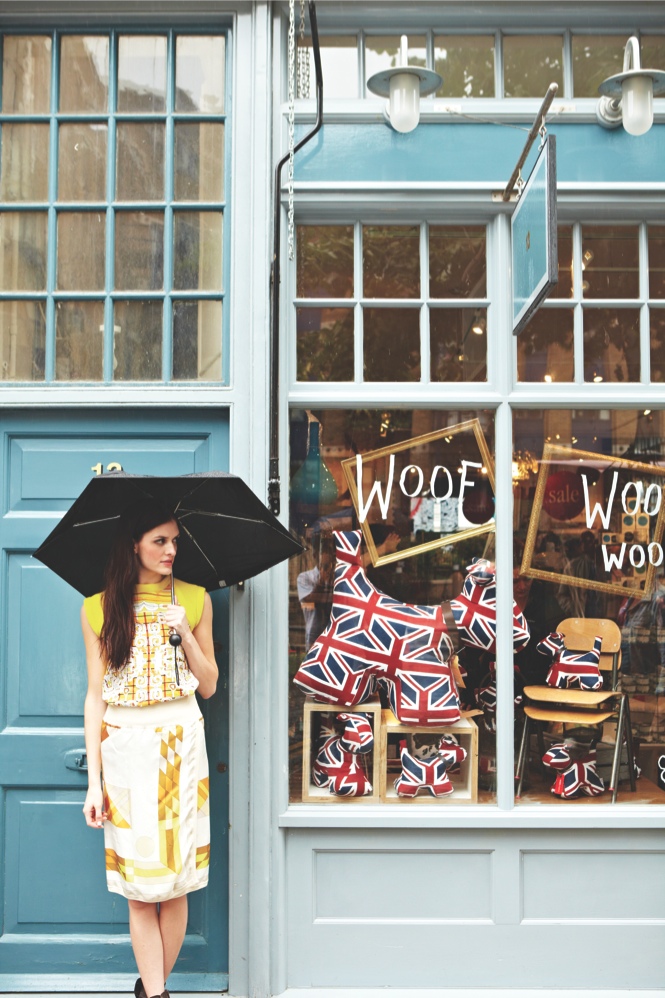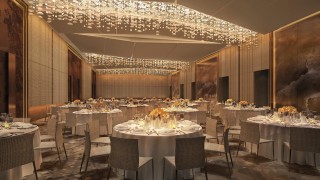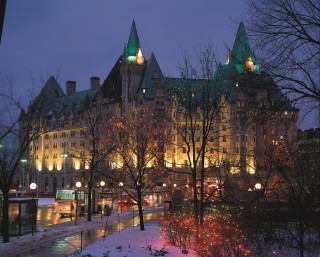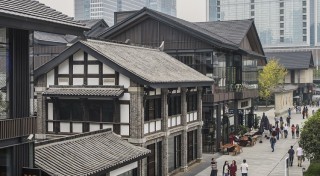Forget what you think you know about the British capital’s eastern precincts; from Shoreditch to Stratford, once-neglected neighborhoods are being reinvigorated by a talented cast of hoteliers, chefs, designers, and artists
By Daven Wu
Photographs by Arseto Adiputra
“My office is in Shoreditch. The nearest Tube stop is Old Street. Do you know how to get here?” the magazine editor asks me over the phone.
Breezily, I say yes, click off my mobile phone, and panic.
I don’t dare tell him that I’ve never heard of Shoreditch, much less know how to get there. Not even a look at the map helps, other than to clarify that it’s in London’s proverbial East End—which only makes things worse. Because, here, courtesy of my mother’s addiction to the long-running British soap opera EastEnders, rise unbidden images of gritty council flats, badly decorated pubs filled with people who drop their h’s when speaking, and a generally rough Cockney neighborhood. If ever you needed a reification of grit and seediness, it’s the East End.
Three years ago, I moved from Singapore to London, and settled into Hampstead, a leafy, upper-middle-class suburb filled with expensively renovated Georgian houses and gentle old Jewish ladies with the plumiest English accents this side of Oscar Wilde. I fell easily in love with the village vibe, especially its high street, along which 19th-century brownstone facades are filled with bakeries and little bookshops. Working from home, I rarely need—or want—to venture out of Hampstead, and if I do, I rarely go far.
Until the summons to Shoreditch.
The Old Street Tube station is a messy underground warren of greasy spoons and homeless panhandlers. Though just six stops from Hampstead, it might as well be another world: before me, accompanied by a cacophony of rumbling trucks and drills, was a grimy tableau of giant signboards, a traffic-choked roundabout, and poorly designed buildings from the 1970s mixing it up with run-down Victorian blocks.
After my appointment at the magazine, I wander down Commercial Road, which looks exactly the way it sounds: a gray, asphalted gauntlet of kebab shops and hardware stores filled with trucks, black cabs, and exhaust-spewing vans. A friend has suggested I visit one of its tributaries, Redchurch Street. “It’s so cutting-edge London, it’s practically bleedin’!” he says.
And so it is. The transition from the main road is sudden, like stepping through the wardrobe into Narnia. Before me now, Redchurch Street is arrestingly quiet and lined with bijou boutiques filled with interesting clothes, antiques, and knickknacks that wouldn’t look out of place in a Scandinavian living room. A pretty girl who looks like she’s stepped out of an Abercrombie & Fitch advertisement pedals by on a bicycle. I walk on, drawn deeper into the neighborhood.
Officially, the East End comprises the hamlets to the east of the City—London’s moniker for its central business district—and north of the River Thames: Spitalfields, Shoreditch, Bethnal Green, Hackney, Whitechapel, Mile End, and Hoxton. But the boundaries are elastic and, depending on who you talk to, can stretch as far east as Stratford, which is being gussied up for the 2012 Olympics.
The signs of gentrification are clearly marked, not least by the shoals of thin, perfectly coiffed young men—invariably dressed in the kind of casual smart jeans and cardigans championed by Commes des Garçons and Tom Ford—you keep bumping into at every grimy brick-walled corner.
The shop windows with their quirky, obviously limited-edition items are equally distracting. I pass by the White Cube and Whitechapel galleries, two small but influential art spaces that hunt down avant-garde work by both established artists and tyros on the cusp of breaking through.
I quickly note that the area’s ancient trade in textiles and clothing continues to flourish. A peek inside a timber-paneled nook on Redchurch Street called Hostem reveals the most au courant men’s streetwear—labels include Rick Owens and Ann Demeulemeester—sold by young, languid salesmen with much better dress sense than I can ever aspire to. Then there are the right-on-trend British-designed duds at Folk, and Labour & Wait’s lovely kitchenware. And at LN-CC on Shacklewell Lane, I discover a 560-square-meter underground gem that looks like a Blade Runner set; racks are stocked with cult labels Wacko Maria Aloha and Sasquatch, while an adjoining bookshop, record store, café, and photographic studio ramp up the cool-quotient.
As I hurry along the narrow sidewalks, dodging guys with artfully trimmed beards in checked shirts and skinny jeans, and fresh-faced models lugging their portfolios to a casting, I sniff the air and detect a frisson of expectation, of something unexplored and new. I inhale deeper and then, I identify it. It’s the scent of potential.
It turns out I’m not that far off.
“The East End is a lovely pocket of creativity in an otherwise horrible city,” says David McCulloch, the managing director of a digital creative agency who moved to the area four years ago for friends, culture, and cheap rent. It’s a sentiment that’s often repeated by the locals I speak to.
“There are good people here, good energy, a slight element of danger, and it’s not pompous,” says educator and artist Daniel Hirschmann, an East End resident for five years now. “This is as edgy and creative as it gets in London.”
Charles Yap, an old friend of mine from Singapore, is equally enthusiastic. “I live in the west and play in the east. I spend my weekends trawling through the shops and street stalls in Spitalfields before ending with a late lunch in, say, Smithfield.” Among his favorite haunts is Columbia Road, a normally grimy street that on Sundays transforms itself into a riot of colors and scents for one of London’s most famous flower markets.
The creative energy that seems to be the East End’s byword has long been part of its DNA. In fact, the entire area is an ancient hotbed for displaced talent. In the Middle Ages, it was home to brewers, bleachers, and vinegar makers whose noxious-fumed trades were banned beyond the City walls. In the 17th century, a wave of immigrants arrived from mainland Europe. First came the French Huguenots, who set up home in Spitalfields and quickly established a thriving silk-weaving industry. Then came a diaspora of Ashkenazi Jews, Irish, and enterprising Eastern European furriers in the late 1800s, followed by Bengalis in the wake of India’s 1947 Partition. Each successive wave settled in and added to the layers of customs and the kind of work ethic and can-do entrepreneurship that I smelled in the air.
The silk workshops and tanneries are all gone now, of course. In their place are boutique advertising and design agencies, coffee joints, and small but tastefully decorated apartments rented by young creative types. On the streets and in the pubs mingle a motley crew of rich art dealers, struggling designers, up-and-coming photographers, ad execs, PR mavens, and students who’ve swapped the comforts of the parental home for cramped flat-shares and a slice of cultural and social emancipation. The mind-set, though, remains unchanged by the centuries. In this sprawling commune of freewheeling spirits, everyone is equal and free to create whatever new identity they choose.
And there’s not a Starbucks in sight.
“I feel a real sense of community, support, and inspiration here,” says Hackney resident Bethany Koby, the design director at brand consultancy Wolff Olins. “We know the farmers that grow our food and sell it at our local market. We are friends with the local Turkish grocer and his family whom we buy our milk from. I also feel this is the place I want to open up my own business and storefront. The energy is here, the people are hungry to make and do more, and there is still real diversity.”
I don’t doubt it for a moment. To enter Brick Lane, at the heart of London’s Bengali community, is to experience an immediate dislocation. Wandering down this stretch of cardamom-scented curry houses and family-run grocery stores stacked high with crates of tiny brinjals and mangoes, it’s impossible to imagine that just a 10-minute walk away are Savile Row–suited bankers, the headquarters of the Royal Bank of Scotland, and Norman Foster’s gleaming architectural landmark, the Gherkin.
The dislocation is especially jarring at the Town Hall Hotel in Bethnal Green. Singaporean hotelier Loh Lik Peng’s £20 million (about US$31 million) renovation of the former town hall—a baroque Edwardian pile built in 1910 that for decades slumbered in derelict splendor—stikes a perfect balance of white marble, stained-glass windows, polished teak, 21st-century mod cons, and vintage Scandinavian furniture. Until just a few years ago, this area was shunned for its rough- and-ready working-class credentials. These days, hipsters throng up the steps to dine at the hotel’s Michelin-starred restaurant, Viajante, a light-filled dining room of blond wood and pastel shades where chef Nuno Mendes presides over a gutsy, post–El Bulli menu.
And only a few blocks away is Bistroteque, an unmarked restaurant in an unremarkable building. But it’s worth seeking out. Tucked away in a nondescript side street, this intimate, raw industrial space serves mod-Brit food upstairs while mixing up fierce cocktails in the downstairs bar.
***
A few days later, I’m back in the area, this time to visit Dennis Severs’ House. Right in the heart of the old city, the late artist styled his Georgian terrace house like a living stage set so that it looks, feels, and even smells as if the fictitious family of Huguenot silk weavers living in that home had just stepped out for a moment, which explains the half-eaten meal at the dining table, the unmade beds, and even the dog-eared open book on the desk. It’s the sort of contrasting mise-en-scène that’s just so typical of the East End.
And while the pace of gentrification from working class to business class is startling, hotelier Loh is unequivocal about the area’s enduring appeal. “The East End hasn’t changed much since the Town Hall opened, and I don’t expect it to change that much for the foreseeable future. It is always going to be edgy and vibrant and appeal to an alternative crowd that’s genuinely creative and adventurous.”
For Bethany Koby, a place as distinctive and unique as the East End is vital to London. The difficulty is maintaining the tension between keeping a little of the area’s roughness and acknowledging that economic drivers have changed, forever, the very shabby edge that drew people like her here in the first place. But like Loh, Koby is positive about the future, though she adds, “I just hope that as more people move in and prices go up, we won’t lose too much of the edge or entrepreneurial spirit.”
In recent years, the new immigrants to the area have come from Hampstead, Chelsea, and the like: young public-schooled graduates from London’s cozy upper-middle-class enclaves convinced, a decade too late perhaps, that they’ll be just in time to witness London’s rebirth.
I have lunch with my friend Sascha Leong, an interior architect who works in Shoreditch. “It was close to galleries that hosted interesting events. It had great clubs, bars, art, and culture. All my friends were here and the rent was cheap. Now the rents have all gone up.”
After lunch, we zip through an outré exhibition of paintings of female genitalia at the White Cube Gallery, whose opening in 2000 kicked off the gentrification of Hoxton. “There are a lot of expensive restaurants now, and a lot more annoying, trendy students living here,” Sascha sniffs, adding in a penetrating tone as I scribble furiously in my notebook, “And there are more tourists because of too many write-ups in travel magazines.”
But that’s the trouble with gentrification. Sooner or later, people hear about it. And they’ll come and have a look. Sometimes they stay. And sometimes, like me, they go home to their leafy suburbs, a little bemused by the experience and more than a little charmed by the East End’s grit and undeniable ghetto glamour.
THE DETAILS
East End London
Where to Stay
** Town Hall Hotel: 8 Patriot Square; 44-20/7871-0460; townhallhotel.com; doubles from US$310.
** Boundary: Owned by Terence Conran, this 17-room boutique property boasts a popular rooftop bar and a terrific all-white bistro on the ground floor that serves modern takes on British classics. 2–4 Boundary St.; 44-20/7729-1051; theboundary.co.uk; doubles from US$248.
Where to Eat
** Bistroteque: 23–27 Wadeson St.; 44-20/8983-7900.
** Pizza East: Owned by Nick Jones of Soho House, this place heaves with
creative mavens and artists hankering for a slice of pizza topped with girolles and cream, and crispy pork belly from the wood-fired oven. 59 Shoreditch High St.; 44-20/7729-1888.
** Viajante; Town Hall Hotel; 44-20/7871-0461.
Where to Shop
** Columbia Road Flower Market: On Sundays, make your way to this legendary flower market for its exuberant bursts of seasonal flowers and quaint antique shops. columbiaroad.info. Folk 11 Dray Walk; 44-20/7375-2844.
** Hostem: 41 Redchurch St.; 44-20/7739-9733.
** Labour and Wait: 85 Redchurch St.; 44-20/7729-6253.
** LN-CC: 18–24 Shacklewell Lane; 44-20/3174-0736.
** Vintage Emporium: Stop by here for a sensational collection of fur stoles, opera hats, and 1940s heels. 14 Bacon St.; 44-20/7739-0799.
What to See
** Dennis Severs House: For a fascinating glimpse into London life in the 18th century. 18 Folgate St.; 44-20/ 7247-4013; dennissevershouse.co.uk.
** Whitechapel Gallery: 77–82 Whitechapel High St.; 44-20/7522-7888; whitechapelgallery.org.
** White Cube Gallery: 48 Hoxton Square; 44-20/7930-5373; whitecube.com.
Originally appeared in the October/November 2011 print issue of DestinAsian magazine (“London’s New East End”)











